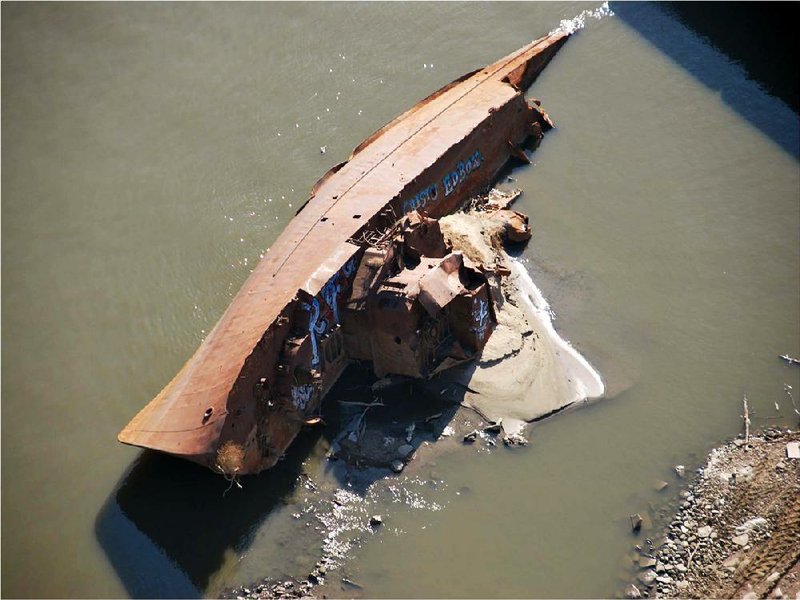ST. LOUIS — From sunken steamboats to a millennium old map engraved in rock, the drought-drained rivers of the nation’s midsection are offering a rare and fleeting glimpse into years gone by.
Lack of rain has left many rivers at low levels unseen for decades, creating problems for river commerce and recreation and raising concerns about water supplies and hydropower if the drought persists into next year, as many fear.
But for the curious, the receding water is offering an occasional treasure trove of history.
An old steamboat is now visible on the Missouri River near St. Charles, Mo., and other old boats nestled on river bottoms are showing up elsewhere. A World War II minesweeper, once moored along the Mississippi River as a museum at St. Louis before it was torn away by flood waters two decades ago, has become visible - rusted, but intact.
Perhaps most interesting, a rock containing what is thought to be an ancient map has emerged in the Mississippi River in southeast Missouri.
The rock contains etchings thought to be up to 1,200 years old. It was not in the river a millennium ago, but the changing course of the waterway now normally puts it under water - exposed only in periods of extreme drought. Experts are wary of giving a specific location out of fear that looters will take a chunk of the rock or scribble graffiti on it.
“It appears to be a map of prehistoric Indian villages,” said Steve Dasovich, an anthropology professor at Lindenwood University in St. Charles. “What’s really fascinating is that it shows village sites we don’t yet know about.”
Old boats are turning up in several locations, including sunken steamboats dating to the 19th century.
That’s not surprising considering the volume of steamboat traffic that once traversed the Missouri and Mississippi rivers. Dasovich said it wasn’t uncommon in the 1800s to have hundreds of steamboats pass by St. Louis each day, since St. Louis was once among the world’s busiest inland ports. The boats, sometimes lined up two miles deep and four boats wide in both directions, carried not only people from town to town but goods and supplies up and down the rivers.
Sinkings were common among the wooden vessels, which often were poorly constructed.
“The average lifespan of a steamboat on the Missouri River was five years,” Dasovich said. “They were made quickly. If you could make one run from St. Louis to Fort Benton, Mont., and back, you’ve paid for your boat and probably made a profit. After that, it’s almost like they didn’t care what happened.”
What often happened, at least on the Missouri River, was the boat would strike an underwater tree that had been uprooted and become lodged in the river bottom, tearing a hole that would sink the ship. Dasovich estimated that the remains of 500 to 700 steamboats sit at the bottom of the Missouri River, scattered from its mouth in Montana to its convergence with the Mississippi near St. Louis.
The number of sunken steamboats on the Mississippi River is likely about the same, Dasovich said. Steamboat traffic was far heavier on the Mississippi, but traffic there was and is less susceptible to river debris.
The U.S. Coast Guard and Army Corps of Engineers urge sightseers to stay away from any shipwreck sites. Sandbars leading to them can be unstable and dangerous, and the rusted hulks can pose dangers for those sifting through them.
Plus, taking anything from them is illegal. By law, sunken ships and their goods belong to the state where they went down.
While unusual, it’s not unprecedented for low water levels to reveal historic artifacts.
Last year, an officer who patrols an East Texas lake discovered a piece of the space shuttle Columbia, which broke apart and burned on re-entry in 2003, killing all seven astronauts aboard. And the remains of a wooden steamer built 125 years ago recently were uncovered in a Michigan waterway because of low levels in the Great Lakes.
Front Section, Pages 7 on 12/23/2012
